Topiaries add beauty and charm to our surroundings. During the fall and winter, these sculptural plants can be used to celebrate indoor gardening as the weather outdoors grows colder. Topiaries can grace your tables and shelves all year long, and they’re perfect for adding festivity during holidays. Plus, they make great gifts! Today we’ll explore a few easy ways to create potted topiaries. Cultivating them takes time, but if you’re looking for a shortcut, read on for topiary tips and design tricks that will help you get the look for less…
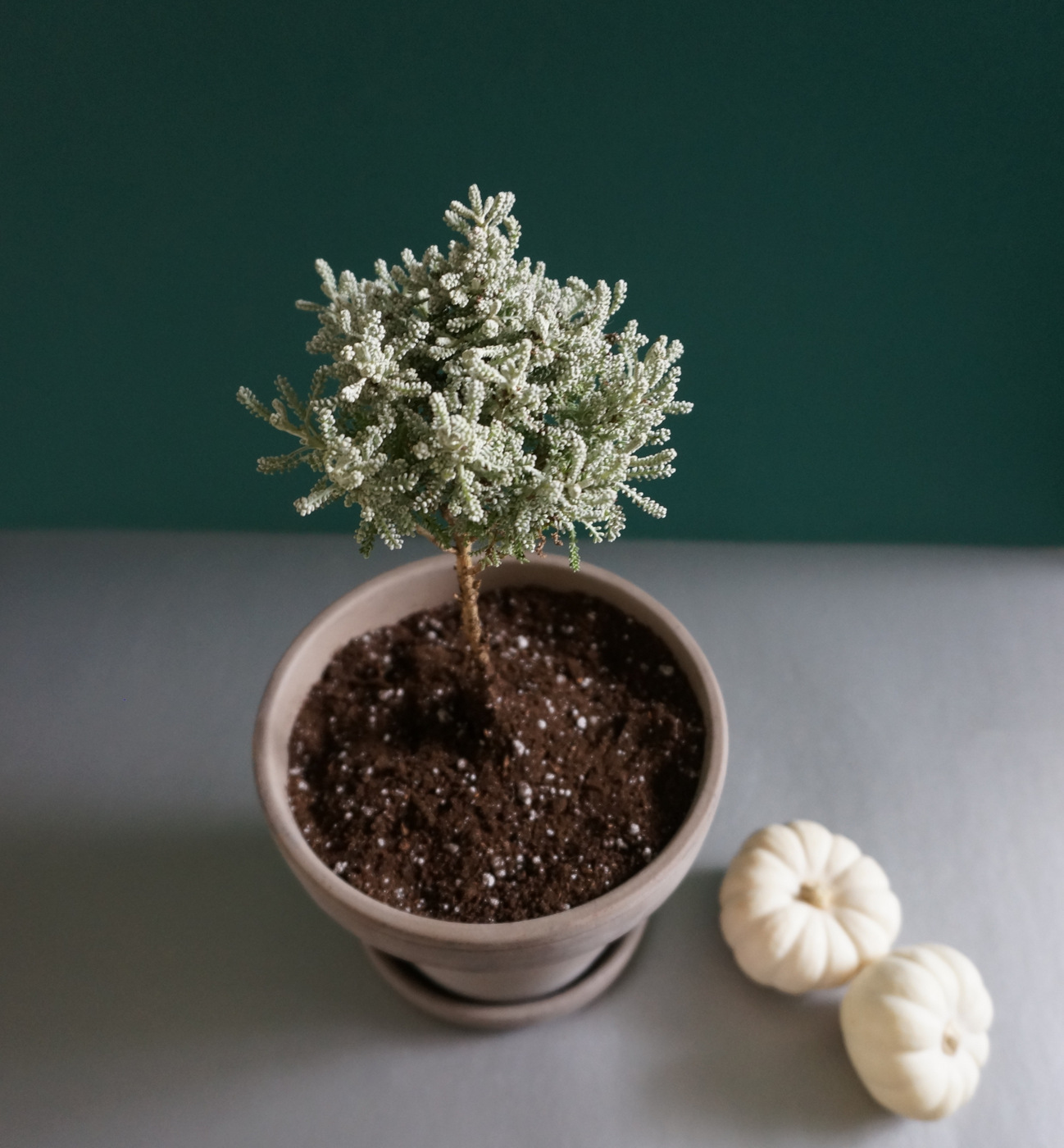
Purchase a Topiary
For starters, you can always purchase a topiary. Retailers such as Terrain offer a wide array of stunning selections that have been carefully cultivated over time. Terrain also offers topiaries made from preserved greenery (such as boxwood). A more lifelike option than faux topiaries, they will stay lovely without the hassle of trimming and watering. If you’re looking for a super-affordable solution, purchase a rosemary topiary:
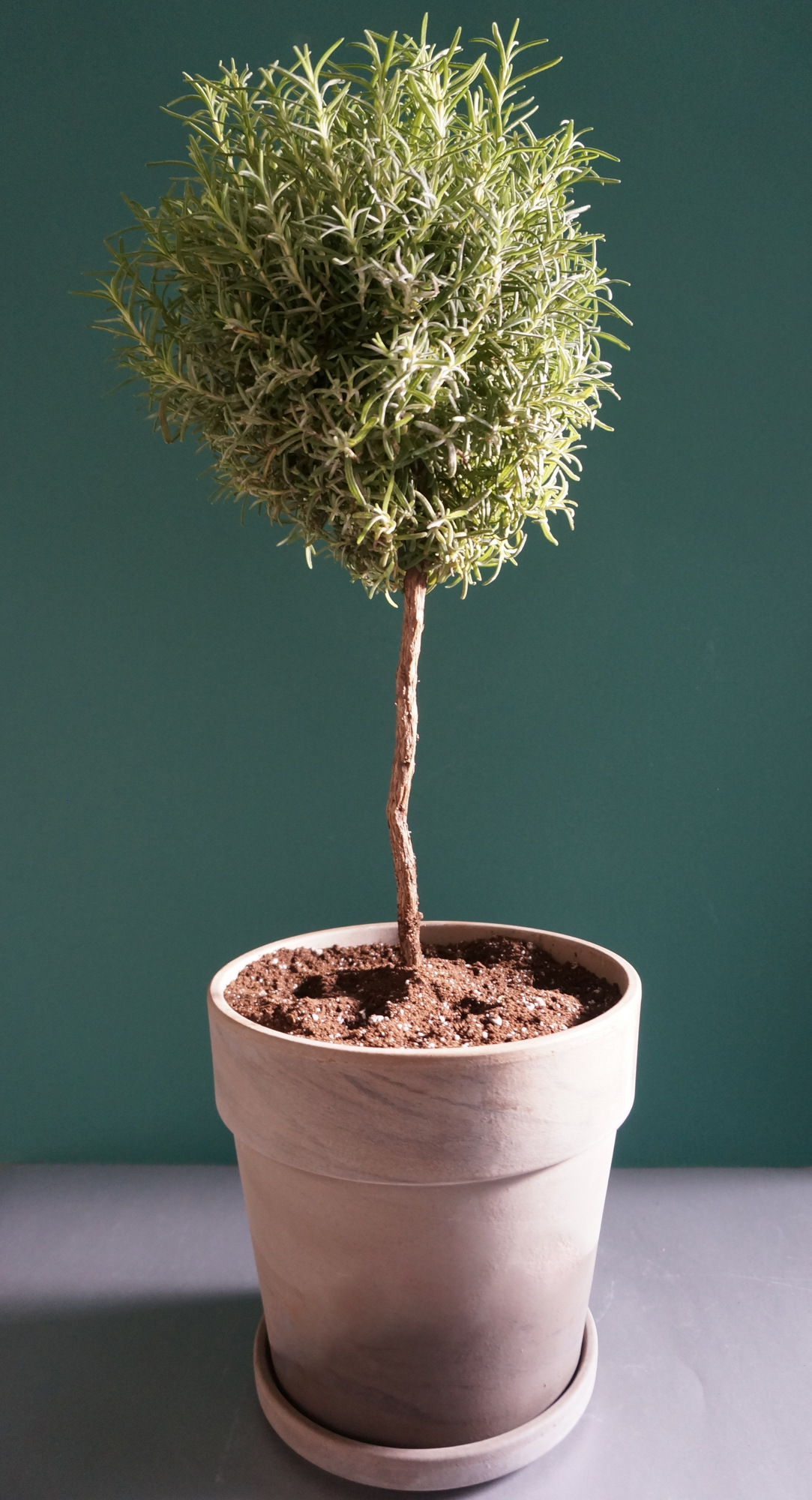
The ball topiary shown above and below was purchased at Home Depot for $18.98! For a quick upgrade, simply remove it from the plastic pot and place it the planter of your choice. The look is classic, sculptural and festive.
RELATED: Topiary Style: A Dash Of Manicured Charm
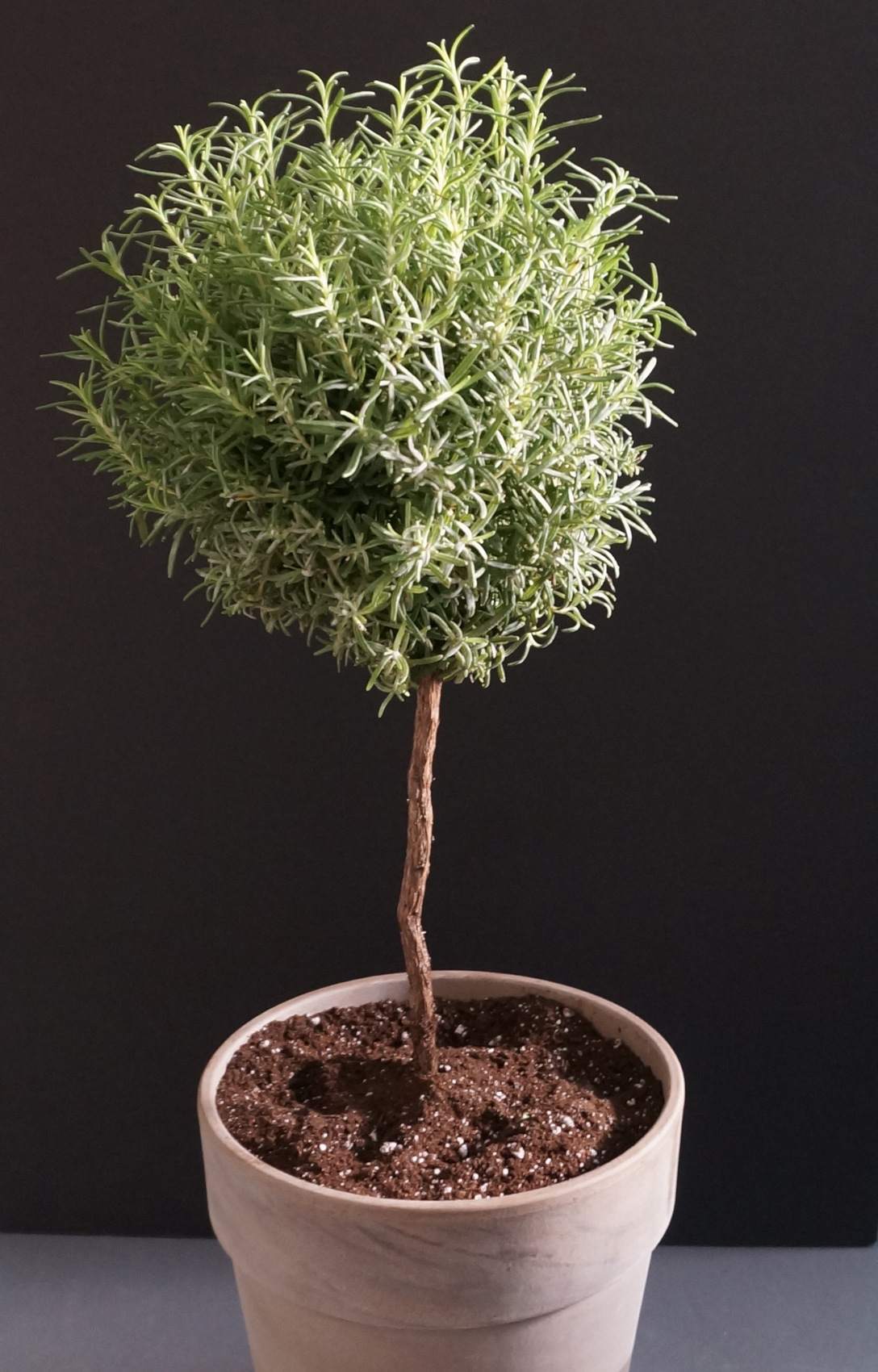
Trim stray leaves as the topiary grows and begins to lose its shape. Buying a topiary is a great option if you don’t have time to cultivate your own. As the holidays approach, many nurseries sell an assortment of topiaries, so stock up while you can.
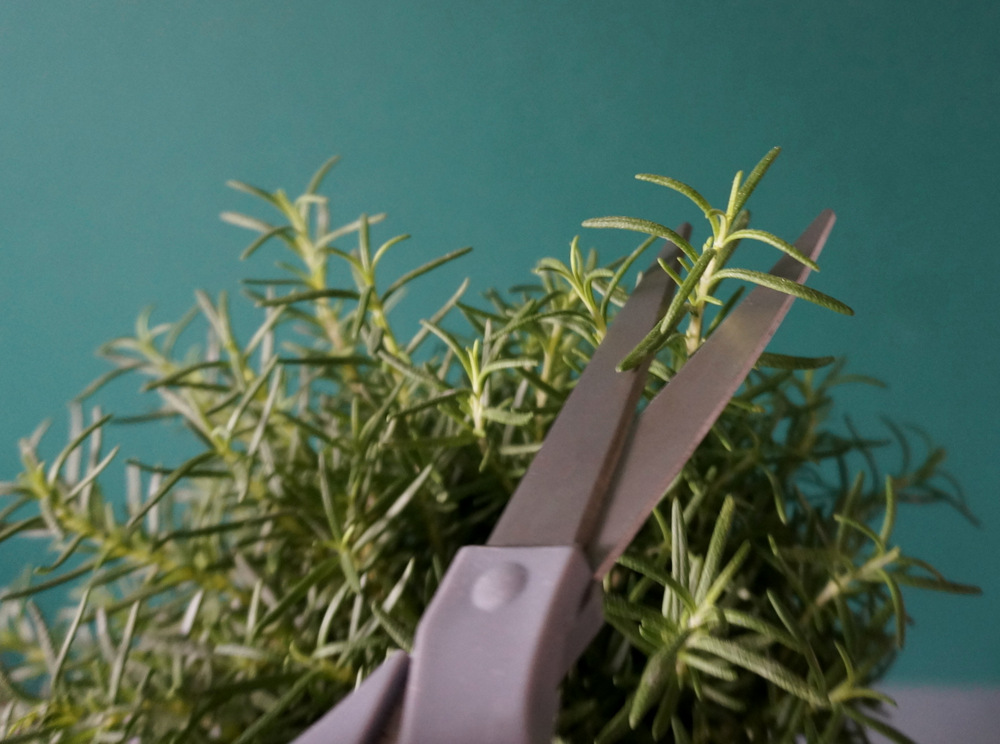
Make Your Own Topiary
So you’ve decided to take the plunge and make your own topiary! Here’s how to get the job done…
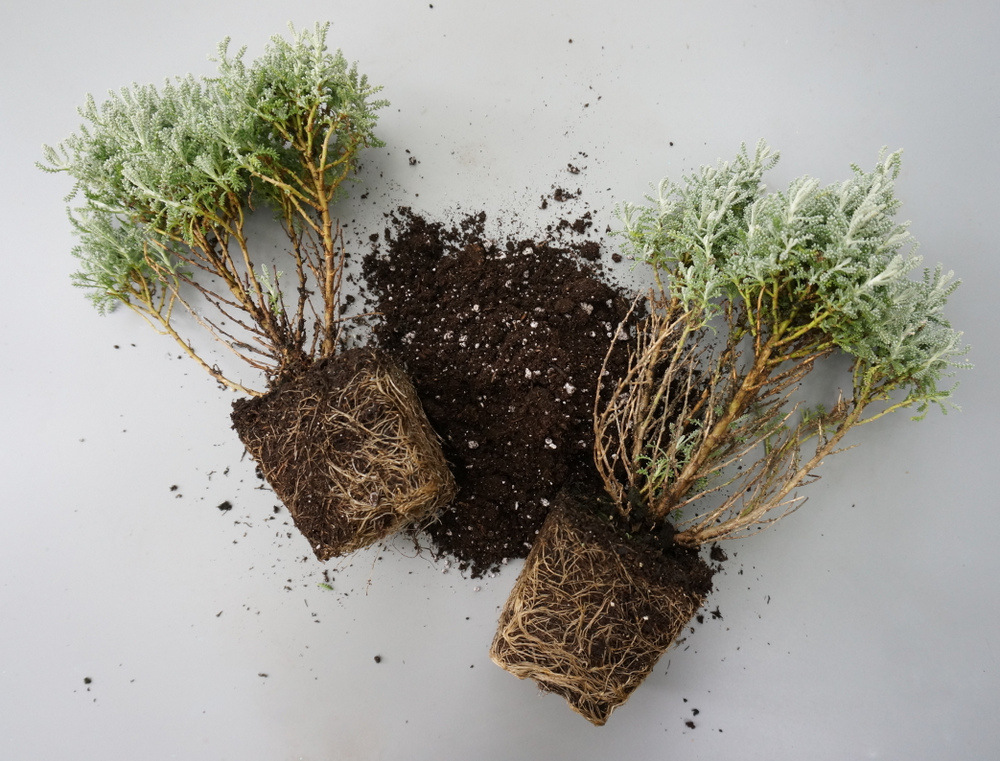
Keep in mind that topiaries can be cultivated from clippings, and the process takes time and patience. Learn more about it by watching this Martha Stewart video. When it comes to making your own topiary, you can take a cutting from the plant, dip the stem in rooting hormone, place it in a pot of soil and watch as it grows. By trimming and training it, over time it has the power to grow into a thriving topiary. If you’re looking for an easier way to get the job done, here are a couple of ideas using the herb santolina…
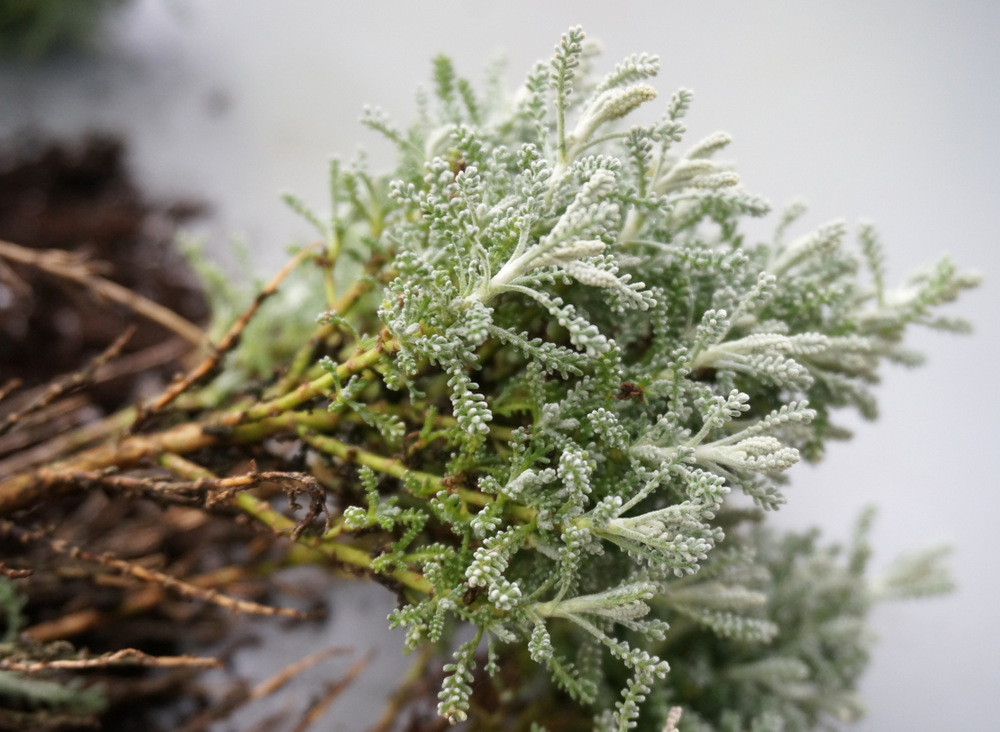
Santolina’s dense leaves make it ideal for pulling topiary duty. . Instead of using cuttings, you can bend sections of the plant down so the side of the stem is touching the soil (as shown below). Use rocks to hold the plant section in the sideways position, being careful not to break the stem.
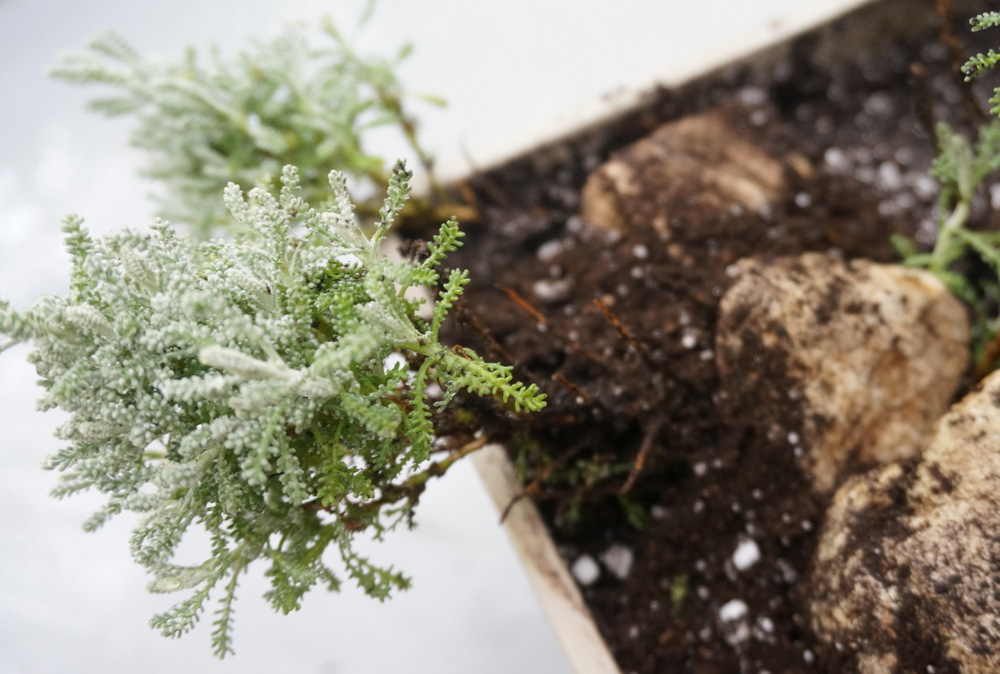
The plant will begin to grow new roots from the sideways stem and down into the soil. At this time, you can cut it free from the the plant, pot it, and train/trim it as needed. No rooting hormone necessary! If the plant has several stems/offshoots, you can plant it in a large pot, carefully bend each stem down until roots appear, and ultimately cultivate several topiaries from one original plant. Now that’s using your greenery to the fullest! This helpful strategy comes to us from Shoal Creek Nursery.
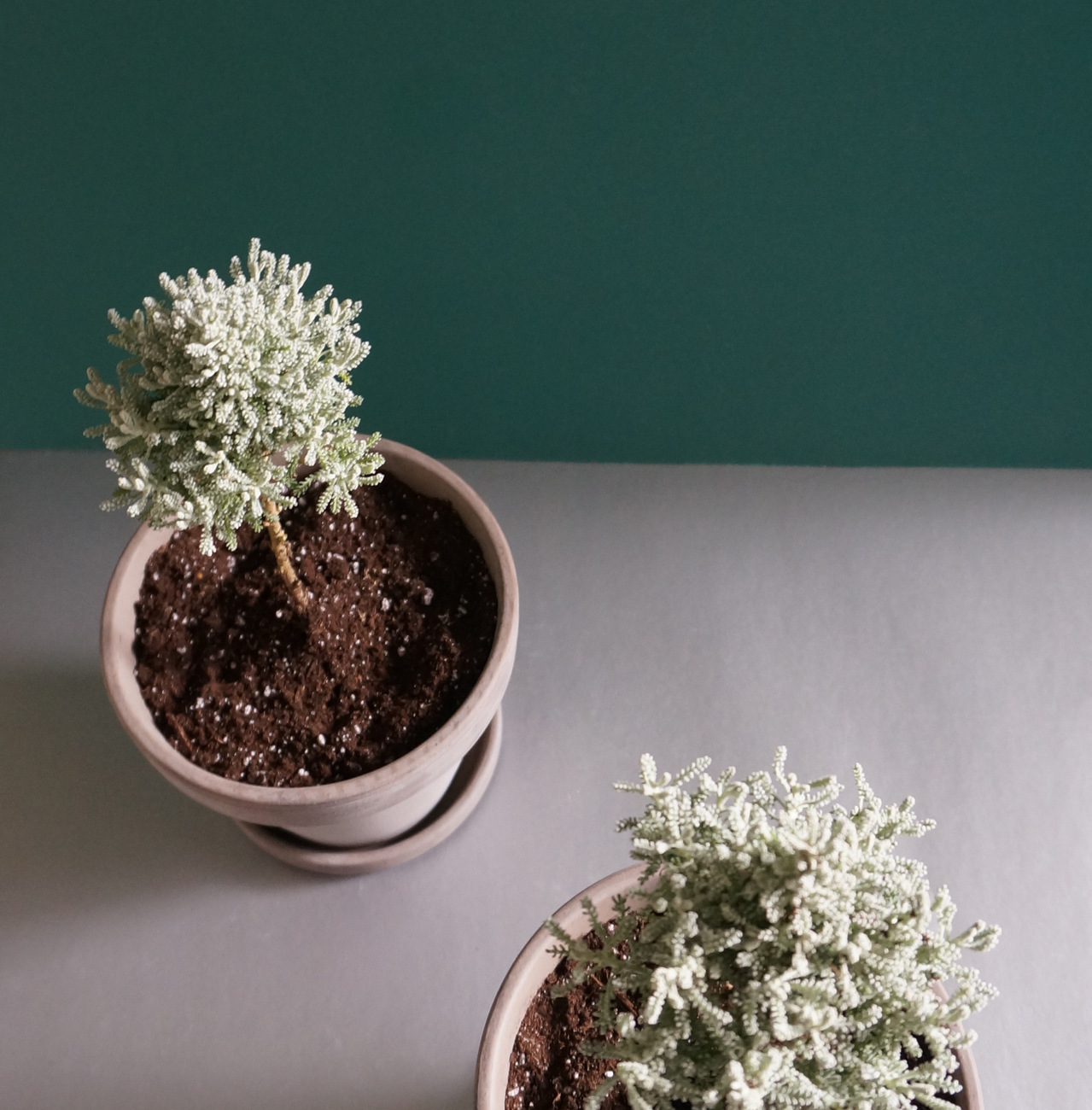
Need a faster method for getting the look? The easiest way to make a topiary is to find a plant (such as santolina) with dense leaf growth, and simply trim the leaves from the bottom portion of the stem, leaving a bushy, full top that resembles a topiary.

A good, sharp pair of scissors is necessary. While simply cutting away excess foliage isn’t the true way to grow a topiary, it’s a quick one. One that can come in handy if you’re scrambling to create a centerpiece or a holiday decoration. We’ll call it a faux-piary!
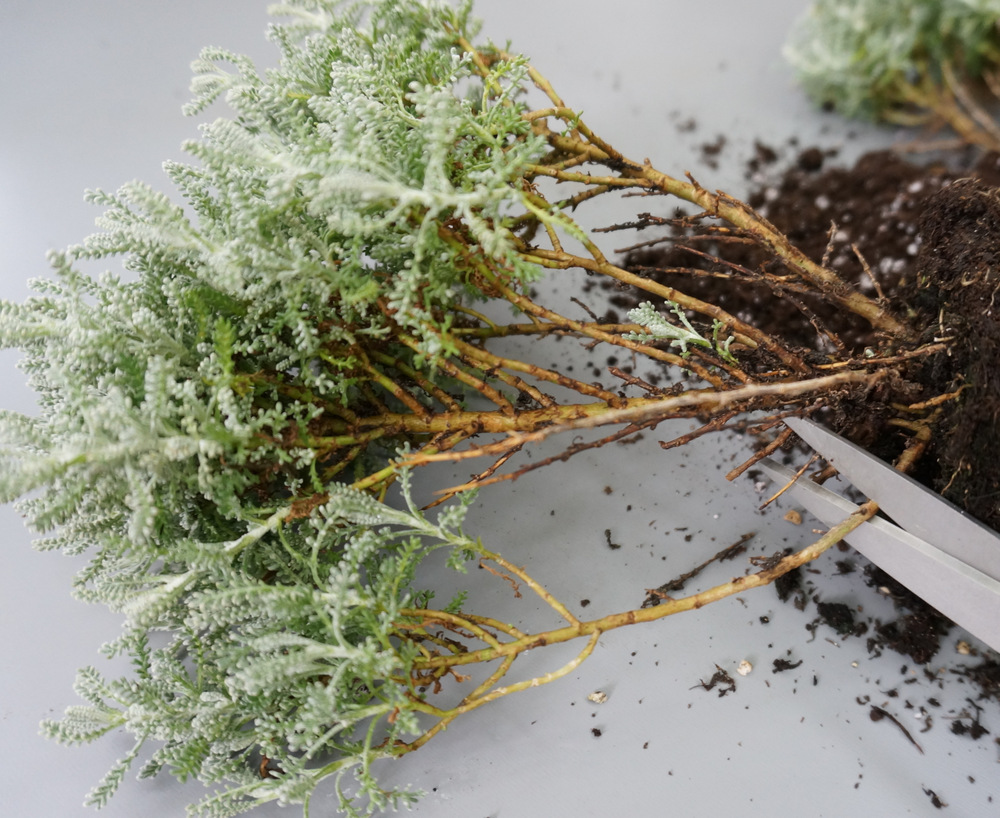
Again, the key is choosing a plant with bushy leaf growth. It also helps if the stem isn’t super smooth. That way, it won’t be noticeable that you’ve trimmed many leaves from the sides. Is the plant below a true topiary? No. But it’s not bad for $2.50! Will it survive long-term? Hopefully, with adequate water and light, although cutting away a large portion of leaves isn’t ideal. If you’re keeping your potted topiary indoors, you may need to move it outside from time to time to give it the sunlight it needs (as well as a good soaking).
RELATED: Smart Gardening Tips For Early Fall
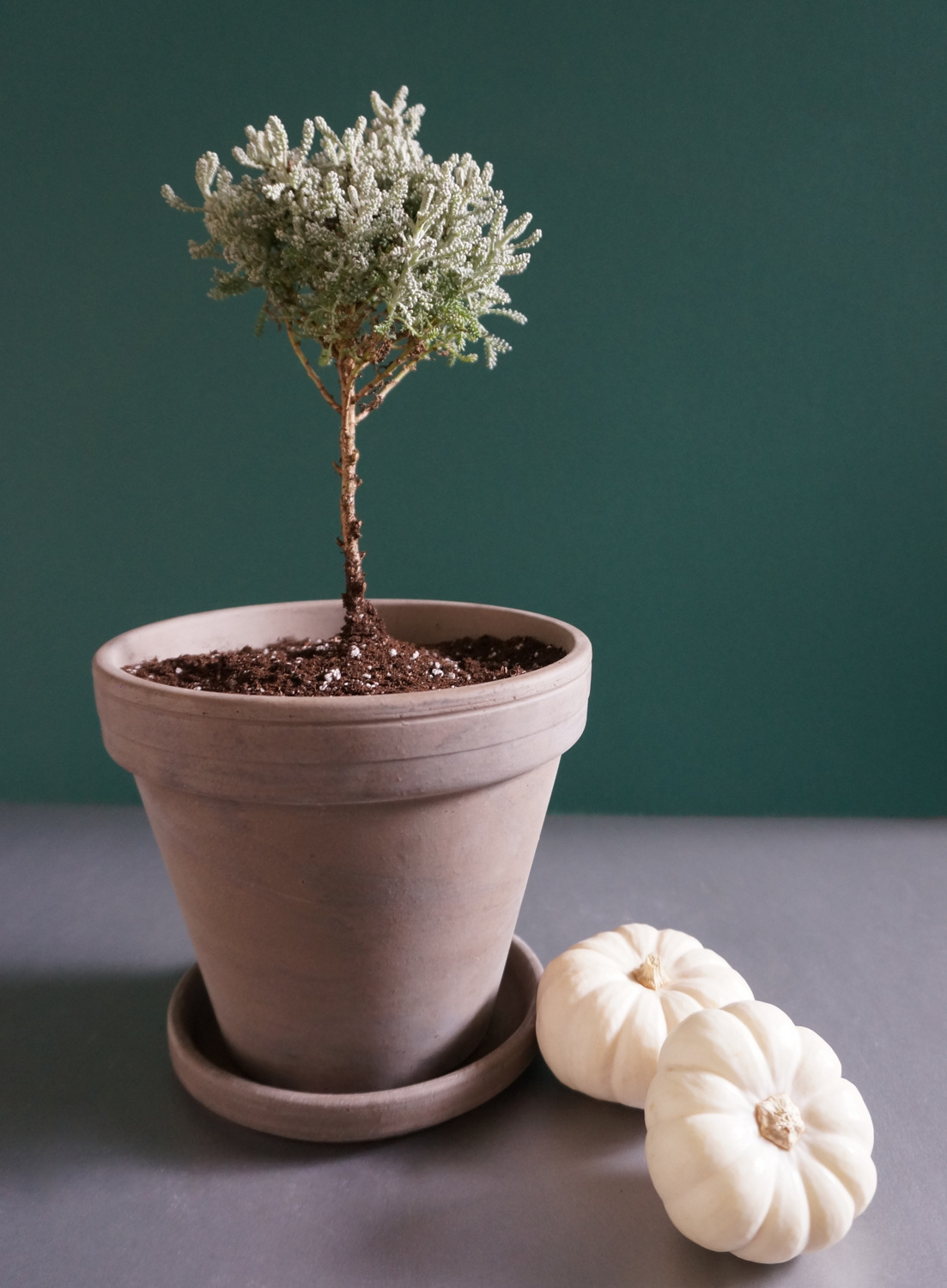
What will you do with all of the greenery trimmings? You don’t have to let them go to waste. Try making wreaths or herbal bouquets out of the clippings. Add a bow and gift your friends and family to a beautiful bundle!
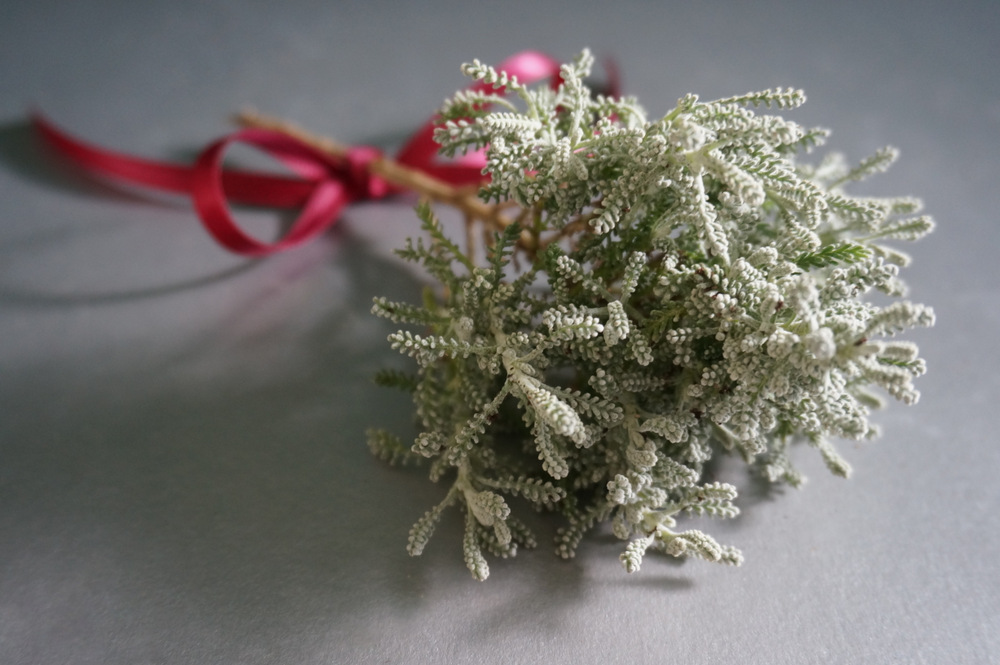
We hope today’s post has shown you that topiaries are well within your reach, as well as your budget. Cultivate them the true way, trim a plant to resemble a topiary, or purchase a lovely selection to use on your holiday table. Experiment with different strategies and find a formula that works for you. Just remember to water your plants and give them the light they need. That way, they’ll not only survive…they’ll thrive!
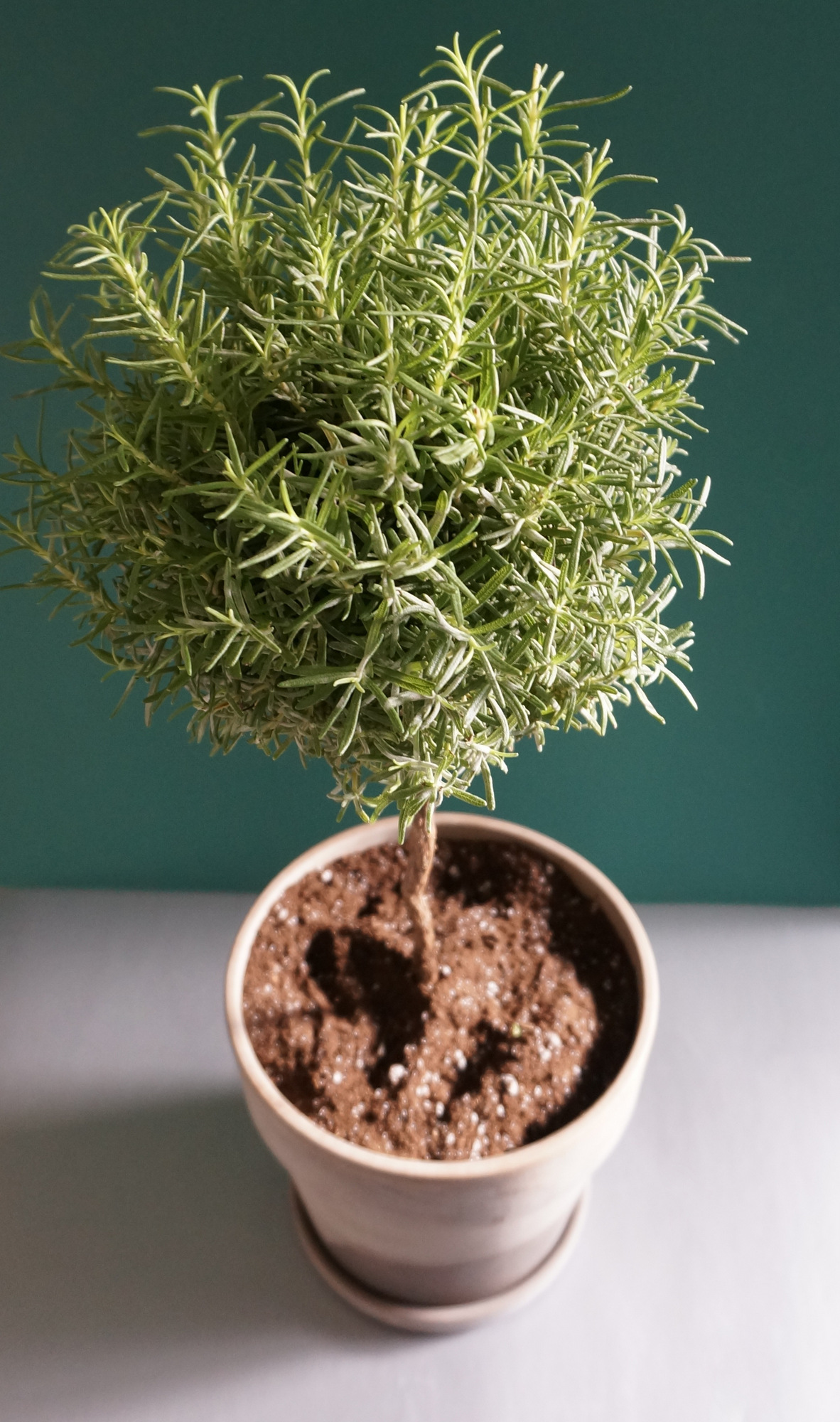
*Photos and styling by Kate Simmons












